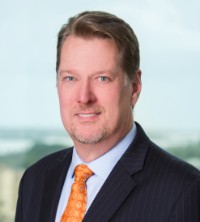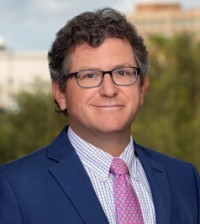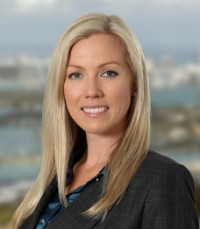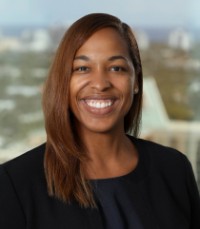Trade Marks & Copyright 2025
USA – Florida
Trends and Developments
Navigating Trade Mark and Copyright Remedies in Florida
Recent developments
Recent developments in trade mark and copyright law at the Eleventh Circuit and US Supreme Court offer unique opportunities for litigating trade mark and copyright claims in Florida. These legal frameworks provide insight that can inform decision-making to determine the most suitable jurisdiction for litigating trade mark and copyright disputes. Some key developments of the nuances are discussed below.
Florida trade mark law serves as a standalone or complementary tool for federal intellectual property claims
Florida trade mark law serves as an effective tool for intellectual property infringement claims, either standalone or complementary to federal claims. It offers a comprehensive framework that includes both statutory and common law claims. The Florida Registration and Protection of Trademarks Act (FRPTA) and the Florida Deceptive and Unfair Trade Practices Act (FDUTPA) provide robust mechanisms for addressing trade mark infringement and dilution. These laws offer a wide range of remedies, including damages, injunctive relief, and punitive damages, for the enforcement of both registered and unregistered marks.
The FRPTA allows for claims of trade mark infringement, which require proof of ownership of a valid Florida-registered trade mark and commercial acts by the defendant that are likely to cause confusion. Florida also recognises common law trade mark infringement claims, which have the same elements as statutory claims. The FRPTA also includes an anti-dilution provision, protecting distinctive and famous marks without requiring registration. However, registration is necessary for non-injunctive remedies in cases of intentional dilution.
Remedies for infringement include damages, injunctive relief, the defendant’s profits, destruction of infringing goods, treble damages, reasonable attorneys’ fees, and court costs. Remedies for dilution include injunctive relief, and if the defendant acted with wilful intent – damages, the defendant’s profits, destruction of infringing goods, treble damages, reasonable attorneys’ fees, and court costs. Under Florida common law, punitive damages are another available remedy for trade mark infringement.
The court may award attorneys’ fees under the FRPTA to the prevailing party according to the circumstances of the case. While this award is at the discretion of the court, fees are awarded in similar circumstances as under the “exceptional case” standard under the Lanham Act, 15 U.S.C. § 1117(a).
Claims under the FDUTPA do not require a Florida trade mark registration, which applies to trade mark infringement and dilution claims. The FDUTPA prohibits unfair methods of competition and deceptive acts or practices, providing remedies such as declaratory judgments, injunctive relief, actual damages, attorneys’ fees and court costs.
Personal jurisdiction is proper when a defendant has sufficient contacts with the forum state. Florida may be a proper forum for trade mark and copyright litigation, where any of the following is true, even if a defendant does not reside in Florida:
- General jurisdiction exists if a defendant has a significant relationship with the state, such as domicile for individuals or principal place of business for entities.
- Specific jurisdiction applies when claims arise from a defendant’s activities in the state, requiring purposeful direction or business conduct there.
- Tag jurisdiction applies when an individual is served in the state, regardless of activity relevance.
- Long-arm statutes allow jurisdiction over out-of-state defendants for specific in-state actions, like business transactions or torts.
- Stream of commerce theory – jurisdiction may be based on placing goods into commerce with intent to serve the forum market.
- Online activities are assessed using the Zippo sliding scale, focusing on website interactivity and targeting the forum state.
Under the Lanham Act, the disgorgement remedy applies only to the profits of named defendants
In Dewberry Group, Inc. v Dewberry Engineers Inc., the US Supreme Court ruled on 26 February 2025, that under the Lanham Act, only the profits of the named defendant can be disgorged in trade mark infringement cases (2025 WL 608108 (Feb. 26, 2025)). The Supreme Court overturned the Fourth Circuit Court of Appeals’ affirmance of a USD43 million award, which included profits from affiliates not named in the lawsuit. The Supreme Court clarified that only the named defendant’s profits should be considered, reversing the lower court’s decision.
Dewberry Group, Inc. and Dewberry Engineers Inc., are competitors in southeastern US real estate, and faced legal disputes over trade mark infringement. In 2007, a settlement restricted Dewberry Group’s use of the Dewberry name. Dewberry Engineers alleged that the Dewberry Group violated the agreement and sued again in 2020 under the Lanham Act. The lower court found that the Dewberry Group wilfully infringed the trade mark. Dewberry Group, Inc., the named defendant, reported no profits, but its affiliates, not named in the lawsuit, earned significant profits. Dewberry Group provides services to these affiliates, generating rental income. The lower court treated the defendant and its affiliate as a single entity, and awarded the plaintiff nearly USD43 million on its claims, which the Fourth Circuit Court of Appeals upheld.
The Supreme Court unanimously reversed the Fourth Circuit Court of Appeals decision, stating that under the Lanham Act, only the profits of a named defendant can be disgorged. The court clarified that “defendant” means the party against whom the lawsuit is filed. Corporate law requires separately incorporated entities to be treated as distinct units, even if they share ownership. Dewberry Engineers did not name the Dewberry Group’s affiliates as defendants or try to pierce the corporate veil. The court also dismissed the argument for a discretionary “just” sum, but left open the possibility of exploring this on remand.
The Supreme Court did not address when courts can examine a defendant’s tax or accounting records to assess the true financial gain of a transaction, even without using the just-sum provision. It also left open the possibility of corporate veil-piercing on remand.
Justice Sotomayor, in a concurring opinion, emphasised that while corporate separateness is important, courts should not ignore economic realities. She suggested that the lower court might consider reopening the record to explore when and how courts can look beyond a defendant’s financial records in calculating Lanham Act disgorgement awards.
Warner Chappell Music Inc. v Nealy: confirming recovery of damages under the discovery rule in copyright infringement cases
The Warner Chappell Music Inc. v Nealy decision represents an expansion of a copyright plaintiff’s potential for recovery in infringement cases, while expressly avoiding abrogation of the more salient question of whether the application of the “discovery rule” is appropriate in determining the timeliness of claims. Instead, the decision underscores the applicability of the discovery rule in copyright cases, allowing plaintiffs to bring claims for older infringements if discovered within a three-year period before the suit is filed, and confirming that damages are available for the entire period of the alleged infringement, from the time the claim accrues and not limited to the three-year discovery period.
In the Warner Chappell Music case, the dispute centred around co-authored musical works, licensed by one co-author to Warner Chappell Music (WCM) as early as 2008. The other co-author, Sherman Nealy (“Nealy”), the plaintiff in the district court, was imprisoned for unrelated reasons for a period of more than 20 years with a brief break in between. In 2016, following his release from prison, Nealy allegedly discovered the licensing arrangement with WCM which Nealy claimed was an infringement of his interest in the work. In 2018, less than two years after the alleged discovery, Nealy filed a copyright infringement action against WCM in the Southern District of Florida. Nealy requested the court award him statutorily available damages and WCM’s profits derived from the alleged infringement.
Initially, Nealy’s claims were challenged by WCM as untimely – under the plain language of the Copyright Act (17 U.S.C. § 507(b)), a plaintiff’s claim is timely under the Copyright Act if “it is commenced within three years after the claim accrued”. The Supreme Court has previously stated that “a copyright claim accrues when an infringing act occurs”. (Warner Chappell Music, Inc. v Nealy, 601 U.S. 366, 366 (2024) (“Nealy”), citing Petrella v Metro-Goldwyn-Mayer, Inc., 572 U.S. 663, 670 (2014), quotations and alterations omitted). Notably, circuit courts of appeal within the United States interpret § 507(b) differently. In the Eleventh Circuit Court, the reviewing court for the Southern District of Florida, a plaintiff’s copyright infringement “claim accrues when the plaintiff discovers, or with due diligence should have discovered the infringing acts” – this is known as the “discovery rule” (citing Petrella, 572 U.S. at 670, n.4, quotations omitted). Thus, under the discovery rule, Nealy’s claims were timely brought (ie, within three years of his discovery of the alleged infringement).
In the case before the Supreme Court, it was WCM’s further challenge to Nealy’s claims that, even if timely under the discovery rule, Nealy’s damages were nonetheless limited to three years, not the entire period of the alleged infringement. In other words, WCM argued, Nealy could not recover for any alleged infringement that accrued from any time before the three-year discovery period; the lower court agreed. The lower court certified the question to the Eleventh Circuit, and in that decision, the Eleventh Circuit reversed the lower court’s ruling, the effect of which would allow Nealy to recover damages for any timely claims brought under the discovery rule. The Eleventh Circuit noted that to do otherwise “would gut the discovery rule by eliminating any meaningful relief” (Nealy, 601 U.S. at 371, citation omitted). The Supreme Court granted certiorari.
In resolving the circuit split, the Supreme Court addressed the issue of whether a copyright plaintiff can recover damages for infringements that occurred more than three years before the filing of a lawsuit under the discovery rule. To that end, the Supreme Court confirmed that “[t]he Copyright Act entitles a copyright owner to recover damages for any timely claim” because the Copyright Act “establishes no separate three-year period for recovering damages” (Nealy, 601 U.S. at 368). Nor does the “remedial section” of the Copyright Act establish such limitations.
In affirming the Eleventh Circuit Court of Appeals’ decision, which rejected the notion of a three-year damages bar on a timely claim, the Supreme Court held that a plaintiff with a timely infringement claim under the discovery rule is entitled to damages regardless of when the infringement occurred, thereby abrogating the Second Circuit Court of Appeals’ precedent set by Sohm v Scholastic Inc. (959 F.3d 39 (2d Cir. 2020)). This decision by the Supreme Court in Warner Chappell Music affirmed the Eleventh Circuit Court of Appeals’ ruling, which rejected the notion of a three-year damages bar on a timely claim.
Justice Gorsuch, joined by Justices Thomas and Alito, dissented, arguing that the plain language of the Copyright Act’s limitations period does not provide for a “discovery rule” and that the decision sidesteps the question of whether such a rule should apply (Nealy, 601 U.S. at 374). And, if the answer is negative, then Nealy should not recover reparations for any of his claims that were not “commenced within three years after the claim accrued”.
The majority decision as well as the dissent leave open the possibility that the Supreme Court could take up the question raised by the decision in a future decision. Until then, the decision underscores the importance of the discovery rule in allowing plaintiffs to seek damages for older infringements discovered within three years prior to filing suit, thus impacting how copyright claims and damages are litigated in the future.
Attorneys’ fees to the prevailing defendant offeror under a Rule 68 offer of judgment in copyright infringement actions can be mandatory in Florida (and elsewhere in the Eleventh Circuit)
A unique and potent point of leverage for defendants in resolving copyright infringement claims in Florida is the mandatory nature of an attorneys’ fees award as costs to a prevailing party defendant that makes an offer of judgment pursuant to Rule 68 of the Federal Rules of Civil Procedure (Rule 68), under Time v Jordan (111 F.3d. 102 (11th Cir. 1997)). In this case, the court reversed the denial of a motion for fees to the defendant whose offers of judgment under Rule 68 of USD15,000 and USD20,000 were not exceeded by the plaintiff’s judgment of USD5,500 damages awarded by the court. The Eleventh Circuit Court of Appeals held:
Rule 68 states in pertinent part “[i]f the judgment finally obtained by the offeree is not more favorable than the offer, the offeree must pay the costs incurred after the making of the offer” (emphasis added). The language contained in Rule 68 is mandatory; the district court does not have the discretion to rule otherwise. Thus, the district court erred when it used its “equitable discretion” to deny Time’s motion for attorneys’ fees and costs. Jordan must pay the costs incurred by Time after the making of its offer. We reverse the district court’s order and remand the matter to the district court for a determination of Time’s costs. Costs as used herein includes attorneys’ fees. Under Marek v Chesny, 473 U.S. 1, 9, 105 S.Ct. 3012, 3016–17, 87 L.Ed.2d 1 (1985), Rule 68 “costs” include attorneys’ fees when the underlying statute so prescribes. The Copyright Act so specifies, 17 U.S.C. § 505.
In the nearly 30 years since Time v Jordan, there are no reported cases in the Eleventh Circuit applying this principle in determining whether to award fees to a defendant in a copyright case. In deciding to make an offer of judgment under Rule 68, the defendant needs to consider any disadvantages of the entry of judgment if the offer is accepted. Such disadvantages may explain the absence of its application in the reported cases. Nevertheless, the threat of mandatory fees if a Rule 68 offer is made can still operate as an effective negotiation tool for defendants in the resolution of copyright claims in Florida.
A recent Eleventh Circuit decision placed a limit on the impact of a copyright claim defendant’s Rule 68 offer of judgment to potentially invoke a mandatory fees award under Time v Jordan. In order for Rule 68 to apply, the copyright claim plaintiff must obtain a judgment less favourable than the offer of judgment. A judgment in favour of a defendant or a dismissal does not trigger Rule 68 or the mandatory rule under Time v Jordan. However, the defendant may still rely on the court’s discretion in awarding prevailing party attorneys’ fees to the defendant (Affordable Aerial Photography, Inc. v Trends Realty USA Corp., No 23-11662, 2024 WL 835235 (11th Cir. Feb. 28, 2024)).
In view of the remedies available under Florida trade mark law and the recent development in federal law in the Eleventh Circuit and the US Supreme Court, litigating trade mark and copyright actions in Florida may present opportunities for efficient resolution of such claims.
Shutts & Bowen LLP
200 S Biscayne Blvd #4100
Miami, FL 3313
Florida
USA
305-358-6300
305-381-9982
marketing@shutts.com www.shutts.com




